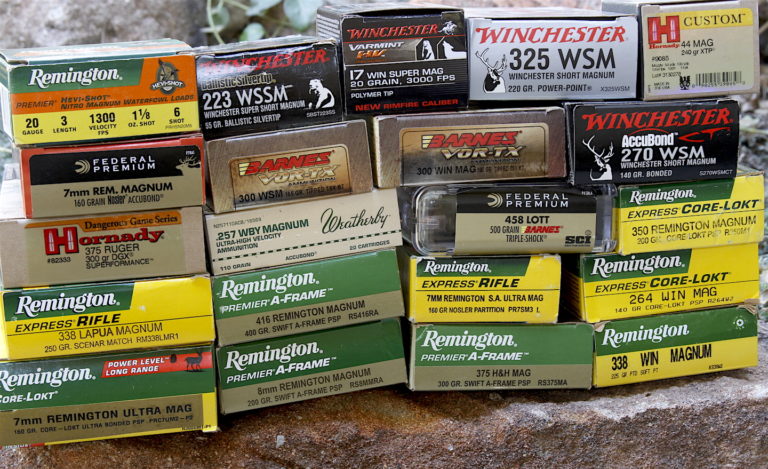Magnum rifle cartridges extend reach, minimize wind deflection, and produce lots of kinetic energy. But magnums suck for training. And if you don’t train adequately, magnums suck for hunting, too.
- Heavy recoil leads to flinching
- Barrels overheat too quickly
- Ammunition costs are high
Why Magnums Suck For Hunting
Many hunting guides admit their magnum-toting clients often miss, miss, and miss again until loaned a 243 Winchester or 25-06 Remington. After firing a few test rounds and discovering the little cartridge isn’t going to slam them upside the head, they aim precisely and terminate their pronghorn, deer, or elk.
This doesn’t mean that magnums can’t be controlled for great effect. Many hunters use them successfully, again and again. But many others struggle with them. The key is to work up to them, and that requires training and practice. The problem is…
Magnums Suck for Practice and Training, Too
To get good at most things you must train properly and practice. A lot. Pro athletes don’t stop training when they reach the pinnacle of their sport. They train all the harder. Shooters should do the same. The challenge when training with magnums is mastering the recoil and heat they generate. Some would say mastering their cost is a challenge, too. Paying $50 to $100 for a box of 20 rounds tends to discourage practice. But even when price is no object, recoil and overheating can be.
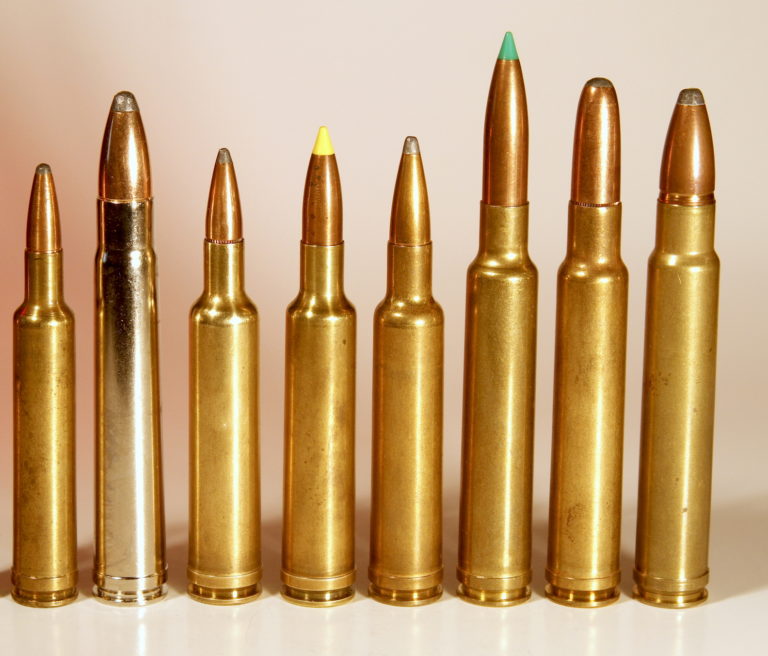
Magnums suck for extended practice, but in the right hands they are deadly effective for hunting. L. to R.: 224 Wby., 375 H&H, 257 Wby., 270 Wby., 7mm Wby., 300 Wby., 340 Wby., 375 Wby.
Co-instructor Darrell Holland and I witnessed this yet again while teaching courses recently at Branded Rock Canyon in Colorado. One student arrived with his 300 Weatherby Magnum, a rifle he’d used to take several elk in past years. He wanted to learn its full capabilities and develop confidence in shooting it. A woman student, also an experienced hunter with elk and deer to her credit, brought the world’s fastest 6.5mm, a 6.5-300 Weatherby Magnum. Neither rifle lasted out the first day.
The woman couldn’t get the 6.5 “dialed in.” Instead of dropping three consecutive shots into an MOA circle or less, she was parking them far and wide. Just about the time she thought she had a good zero dialed in, the next two shots would sail high, right, or left. BRC Shooting Program Director Joe Cereghino changed the scope mounts to improve her eye relief and alignment. Then he cleaned the barrel. Darrell and I worked on her body position, finger control on the trigger, gun alignment in the bags, etc. to no avail. Was it the scope, the gun, the ammo, or the shooter? Finally, we put her behind Darrel’s personal 6.5 Creedmoor. We knew this rifle was dialed in and shot sub-MOA. What happened?
Man Discovers 300 Magnum Sucks for Training
While the 300 Wby. Mag. is a proven cartridge used successfully around the world for taking nearly every game animal, it is not optimum for extensive training. Doesn’t matter how accurate the rifle or cartridge. Firing a 300 magnum — or any magnum using 140-grain or heavier bullets — repeatedly almost invariably induces a bit of flinch to the overworked shooter. One can only take so many punches before beginning to anticipate. This was easily revealed when the gentleman was handed his rifle on empty. Only he didn’t know it was empty. When the firing pin fell, the man’s eyes closed, his head jerked up, and the rifle twitched violently. Pretty hard to punch with precision when flinching like that.
Wisely, and of his own volition, the gentleman requested a lighter kicking training rifle. We put him behind a 6.5 Creedmoor. His hits gradually, steadily increased.
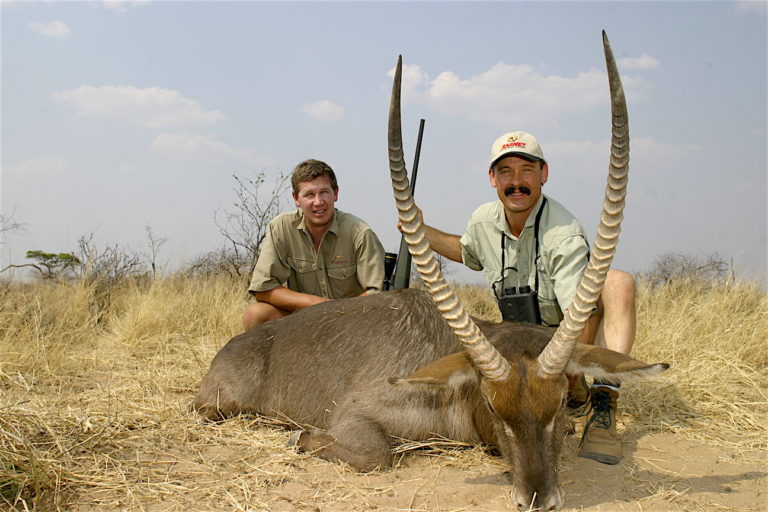
The 300 Wby. Mag. is a proven big game cartridge used around the world. A Rifles, Inc. M70 custom by Lex Webernick performed well for the author in Namibia more than 17 years ago. PH Jamy Traut led the author to this splendid waterbuck. A Leupold VX-3 3.5-10X40mm scope directed traffic and a 180-grain Swift A-Frame did the heavy lifting. That odd looking binocular I’m dangling was an early rangefinder from Leupold, the name of which escapes me. It worked consistently well at reasonable hunting distances.
Minimal Recoil makes Training Better
Reducing recoil and the noise of a magnum goes a long way toward making the 6.5 Creedmoor the darling that it has become. This round is ballistically no more effective than a dozen others, but it burns so little powder and recoils so minimally that most shooters can control it without flinching. The long, slim, high B.C. bullets it shoots are designed to resist wind deflection. Know its ballistic curve and you can dial, select MOA holdovers, and drop projectiles on target at surprisingly long distances. More importantly, you can shoot without flinching. If you have a 243 Winchester, 257 Roberts, 7mm-08 Remington, 270 Winchester or even a 223 Remington, you’d be better off using them for training. They might not match the magnum’s reach or trajectory curve, but you can adjust for that later with the right data card. When training it’s more important to master body position, rifle position, and trigger control. Save your magnum for the hunt.
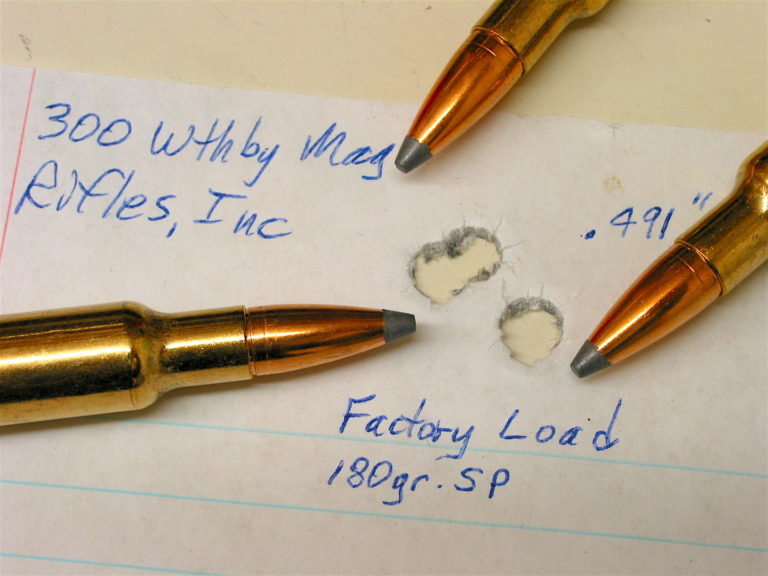
The 300 Wby. Mag. is capable os stellar accuracy, but shooters must train to shoot it effectively.
If you don’t have a light rifle/cartridge, I strongly urge you to get one. Even an inexpensive, plastic-stocked “starter” rifle in that $400 to $700 price category can generally shoot MOA or close enough to it for confidence-building practice. Ammo costs will be low, recoil will be low, and advancement will be quick. Between classes at Branded Rock I shot a Savage M110 Storm with 20″ barrel in 223 Rem. and punched MOA groups with two different Federal factory loads. That little rifle weighs less than 6-pounds, yet it consistently smacked gongs out to 400 yards. That’s easy, mild, cheap practice.
Magnums Suck For Training Because of the Flame
A magnum cartridge burning 90- to 110-grains of powder attacks barrels like a blow torch. If a barrel is fairly light, as hunting barrels generally are, it quickly overheats. And then, unless it’s perfect, it tends to “walk,” meaning it bends slightly as the stresses in the thin steel tube change due to the extreme heat. This was the issue our woman shooter was fighting in her 6.5-300 Wby. Mag. After just three shots the barrel was more appropriate for frying bacon than punching bullseyes. We had the poor lady waiting five minutes between shots. Such performance limitations aren’t often an issue when hunting because one to three shots usually ends the event. But for training and practice when 20 to 200 rounds might zing downrange in a day, magnums are not ideal.
Once our lady shooter had gained confidence and learned how to use an MOA reticle, MOA turret dialing, and a ballistic data card, she was able to switch back to her 6.5-300 Wby., reach out, and smack steel with confidence. And that’s the goal of training and practice.
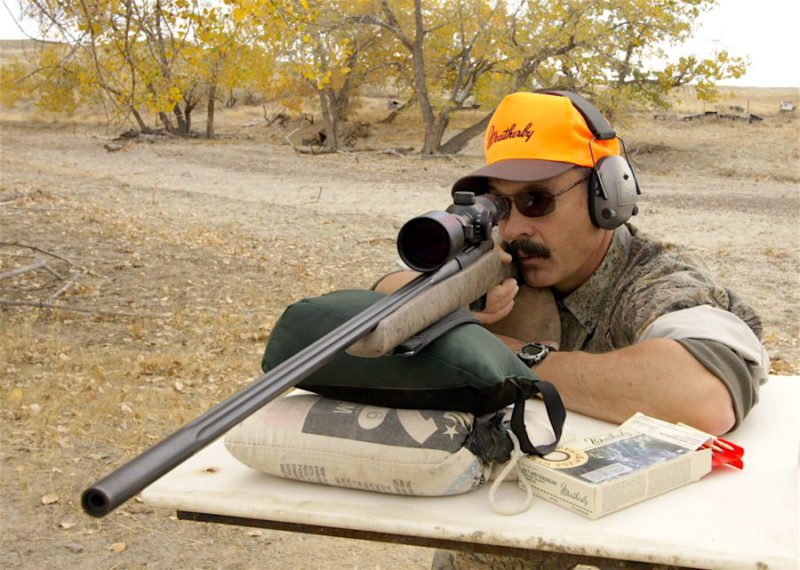
Light barreled magnums like this Weatherby in 257 Wby. Mag. tend to overheat quickly and then wander. Fluting increases the wandering. This isn’t a problem for the one to three shots you fire when big game hunting, but can be during extended shooting on the target range. That’s when magnums suck.
Magnums have helped Spomer take a wide variety of game from squirrels (22 Win. Mag.) to cape buffalo (458 Lott.) But he practices with much smaller cartridges.

